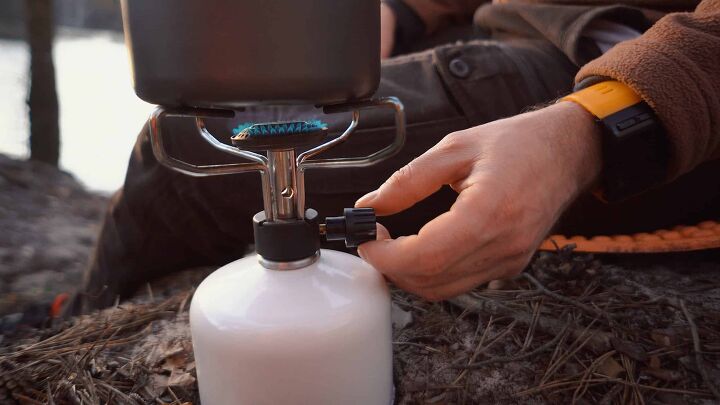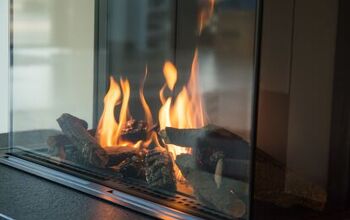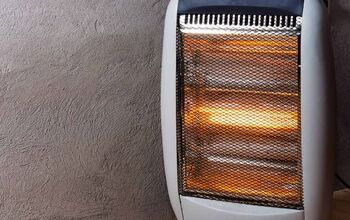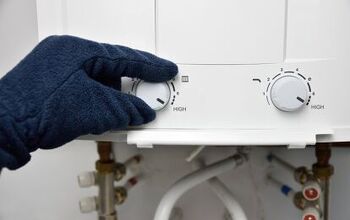How Much Propane Does A Pilot Light Use?

Propane can be a great way to heat a home during the colder months of the year, especially in places where natural gas lines have not been run or are not easily accessible. It can be especially important when an appliance requires a pilot light in order to properly function.
Some can become worried that using pilot lights can get expensive. Generally speaking, a pilot light will burn around 5 to 12 therms of gas each month, depending on the appliance. This equates to about $11 to $26 per month for $2 per gallon propane.
Do You Need a Furnace Repair Contractor?
Get free, zero-commitment quotes from furnace professionals near you.

Uses for Pilot Lights
To the uninitiated, it may not seem like a pilot light has that big of an impact on life. But it is actually involved in a lot more applications than you may realize. Pilot lights can be used on stoves, furnaces, hot water heaters, and more.
It also depends on the setup of your home. More modern homes have made the switch to electric appliances, meaning that even the stoves and water heaters no longer require a pilot light. That can save you quite a bit in the long run on your propane usage.
But we are here to tackle the issue facing those that run propane in their homes regularly. Because natural gas lines aren’t always easily accessible or available, propane can make for a great source of heating.
Pilot Lights on Furnaces
A constantly burning pilot light can add quite a bit of heat to your house. A pilot light that is constantly lit for heating purposes can add anywhere from 17,000 to 40,000 BTU to a household per day. This depends on the size of the home and how much heat needs to be generated.
Using a pilot light can be great in the winter, but if it remains on in the summer it can make the house much hotter and require higher air-conditioning costs to keep the temperature down. Even in the winter, there are areas of the home where people don’t typically spend time. That can mean wasting additional BTUs heating areas that don’t get a lot of use.
Pilot Lights for Water Heaters
Despite the fact that we make use of water heaters throughout our day, they actually do not use as much propane as you would think. Sure, they light up whenever water needs heating up but we typically do not use that much hot water in a given day.
As a matter of fact, there are some instances where propane needed to heat up water can run as little as $60 per year. That is a drop in the bucket for hot water whenever you need it. Besides, not too many people enjoy taking cold showers, now do they?
Consider Turning Off Your Gas Fireplace
One area where a lot of propane can be spent and even wasted is in the fireplace. We use propane for heating in a number of ways, but fireplaces are one of those common methods. And depending on where you live, that can mean extra heat being dispersed through your home when you don’t want any additional heat around.
A pilot light, no matter how you cut it, means heat. And that means using propane to do it. The flame that ignites in your fireplace doesn’t stay lit by magic and the longer that the light is on, the longer that you are using fuel to supply it.
Even worse, when a pilot light is burning for loner periods of time, particularly in the summer, without actually igniting, there can be a nasty film that develops on glass doors like those of a fireplace. Since it is sulfur-based, it can actually permanently damage the glass surfaces that it rests on if it doesn’t get cleaned off.
Costs of Leaving Your Pilot Light on
While the costs of keeping the pilot light lit constantly aren’t astronomical, they can add up over time. Generally speaking, you can expect to pay anywhere from $20 or more per month to keep your pilot light on even when not igniting it.
To some, this isn’t a big deal. But for those that don’t want excess heat in the summer and don’t want to pay any additional money just for keeping the pilot lit, turning off the pilot for extended periods can actually be financially beneficial.
Keep the Pilot on to Keep Spiders at Bay
Here’s something that you may not have known: spiders love the smell of a compound known as mercaptan. For some unknown reason, gas companies add this compound gas. When you turn off your pilot, those traces of mercaptan can actually attract spiders. The spiders then spin their webs and can actually clog up the pilot light system.
So, it can be beneficial to keep your pilot light on for extended periods of time in order to keep the spiders from clogging up the works with their webs. Not only that, when the compound is moving out of the tubes, it isn’t an attraction for the spiders to flock to.
Keep the Moisture Away
Another important reason to keep your pilot light lit up on a frequent basis is to keep any potential moisture out of the unit itself. Keeping the moisture away is a great way to reduce humidity levels, particularly if there are homes that have fireplaces in the basement.
Reduced humidity can prevent corrosion from occurring in the pipes. Whenever corrosion builds, it can damage the pipes and even lead to the need to replace the unit entirely. This can cost you quite a bit in the long run.
Keeping the Pilot on in the Summer
For the most part, it probably isn’t the best idea to keep the pilot light lit during the warmer months of the year as far as your furnace is concerned. As stated above, this can create excess heat during a time where any additional heat is not welcome in your home.
But it can be a good idea to keep the pilot light running during the warmer months of the year so that you can generate a little bit of heat when the summer nights can turn chilly. Keep in mind that running your pilot light all summer long can wind up cost you more money in the long run than throwing on a sweater will.
Do You Need a Furnace Repair Contractor?
Get free, zero-commitment quotes from furnace professionals near you.

Costs of Using Your Furnace
There are around 91,000 BTU in a single gallon propane. Per gallon, propane costs in the neighborhood of $3.00. A pilot that is used to heat a furnace can generally run around 8-10 gallons of propane in a month. This can fluctuate on the amount of usage.
At the $3.00 per gallon ate, that can mean $24-30 in propane costs per month. That isn’t all that much, but it does add up the more that you use it. If at all possible, natural gas is a cheaper alternative to propane and you don’t have to worry about things like a frozen propane tank.
In the end, though, leaving your pilot going all the time will only raise the costs of your propane during a given month. Keep an eye on this and adjust your usage to bring your propane costs down into budget.

Ryan Womeldorf has more than a decade of experience writing. He loves to blog about construction, plumbing, and other home topics. Ryan also loves hockey and a lifelong Buffalo sports fan.
More by Ryan Womeldorf



























